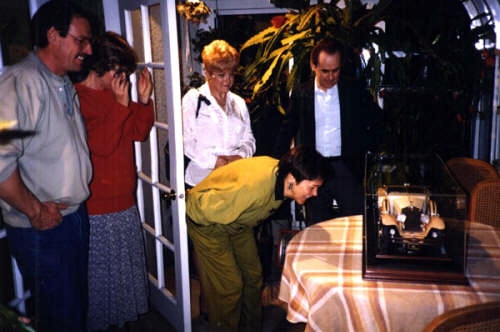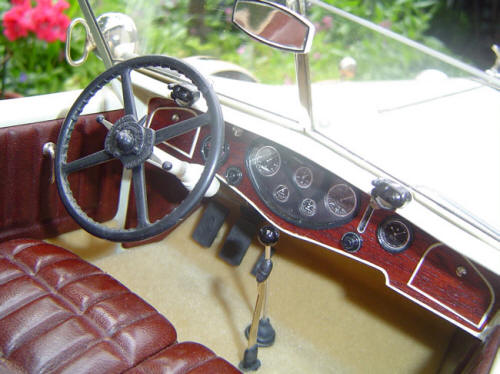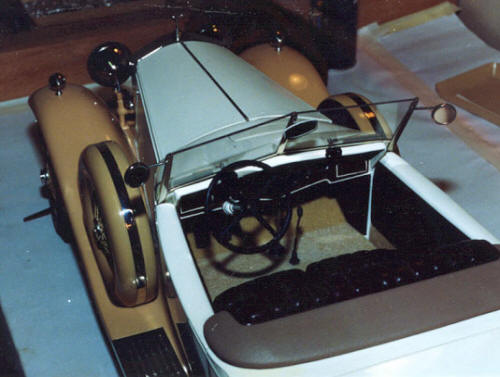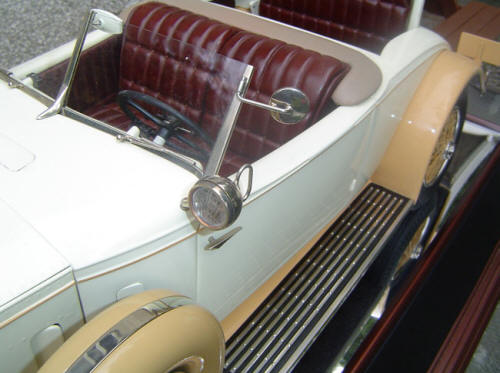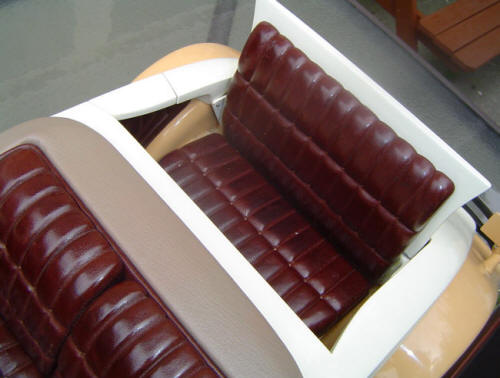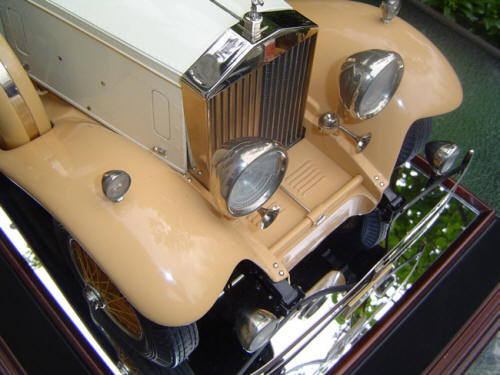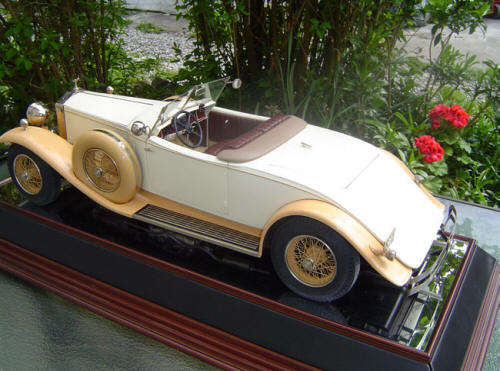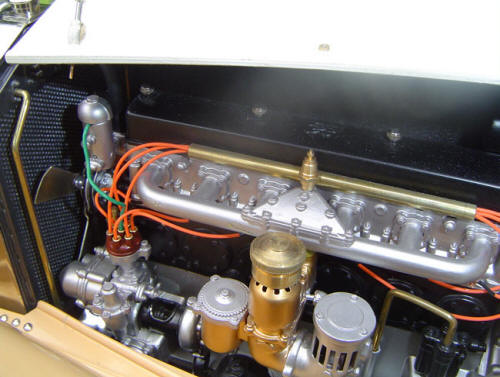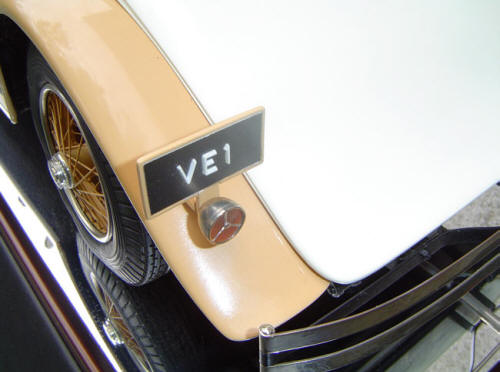|
1:8th. Rolls-Royce
Henley Brewster Phantom II model:
Chassis:
The main frame and many of it's component parts, were used from the
Italian Pocher kit of the English RR Phantom II. This included the
exhaust system, axles, brake drums, engine, steering wheel and column,
spoke wheels, tires, radiator, flying lady emblem, headlights, side
fender lights, and horn assembly.
Chassis
Modifications:
As our model was to be of the American "left hand drive" version of the
Phantom II chassis, many modifications had to be made to the Pocher
parts. As the steering column and the controls had to be switched to
the other side, it was necessary to modify many of the engine parts, in
particular the exhaust system. In some cases, new molds had to be
made, in order to produce the new castings.
Henley
Brewster Body:
The
particular design
of Brewster body that we decided to replicate was featured in the
excellent book by John Webb
DeCampi "Rolls-Royce in America". It appears that a few of the
original motor cars have been restored or maintained in excellent
condition by a number of collectors in the U.S. today.
The floor board section
from the Pocher kit was also used to tie the four fenders together into
one large assembly. The Henley wings are a unique design, and do not
resemble the Phantom II wings in the Pocher kit, so they had to be
prefabricated from plexiglas and body fillers. Once this complete
assembly was finished, a rubber mold was made. Using various epoxy
and polyester materials, castings were made of the floor and fender
assembly.
The engine compartment
bulkhead from the Pocher kit was modified, and used as part of the new
body shell. With the use of plexiglas, metal and body fillers, the
original plug for the main body was built. This assembly contained the
aperture for the rear hatch, and the two side doors. A rubber mold for
this assembly was made, enabling us to make castings in various epoxy
and polyester materials. The two main doors, the small hatch
compartment door, and the hatch door were made the same way, and rubber
molds were produced.
Bumpers:
The bumpers are individually built from flat brass strip and
tube. Jigs and dies were made to form the unique shapes, which were
then soldered together. The spring strip assemblies behind the bumpers
were built in the same way. Bumpers were then polished, copper plated,
and then nickel plated. Spot lights on the bumper were from metal
casting we did in house.
Windscreen:
One of the very distinctive features of the Henley Brewster
is this centre split screen. It consists of three vertical elements,
and one horizontal base frame, molded to the shape of the body. The two
plexiglas panes are open at the top. The centre vertical element has a
streamlined section at the bottom. We manufactured these screen
assemblies individually with brass channel, box section and solder.
Polishing, copper and nickel plating gave these pieces their final
finish. Rear view mirrors, and screen spotlights were also scratch
built and finished in the same way.
Dashboard:
Many hours were spent replicating the classic shape of the
Henley dashboard assembly. Full size artwork of the instrument dials
were created, reflecting the smallest detail such as the RR logo.
These were then reduced, and printed in 1:8 scale. The dash was
covered with a micro thin wood veneer, and the instruments put behind
clear acrylic with metal bezels. Simulated switches and push/pull
knobs were then added. Gear shift, handbrake and foot controls are
all built to the exact specification of these classics. The interior
door handles were hand built from brass, and the exterior door handles
are metal castings that we actually cast ourselves. All these parts
were nickel plated.
Seats
and door trims:
Seat cushions and backs
were made from plexiglas and body filler to form the basic ribbed
shape. As was the door trims, and inside walls of the cockpit. They
were than covered in the finest glove leather we could find. The
leather was then treated with the required colour of die, to match the
interior trim.
Doors:
The doors were not made to open, as it was possible to see the interior
with them closed. Where possible, we try to keep moving parts to the
minimum, in order to guard against rough handling. Unfortunately, the
only way it was possible to see the interior of the rear hatch
compartment, was to make the hatch open. If we had fixed it in the
open position, you would never get to appreciate the beautiful lines of
the back of the vehicle.
Engine
Compartment:
This was also the case
with the engine compartment. It was necessary to make the hood or
bonnet lift, in order to see the engine detail.
Model
Base:
In
order to see the underside of the model, we decided to cover the base
surface with an acrylic mirror. Leather covered panels surround the
plinth, inside the clear acrylic cover. Wood moldings form the main
base, which has a draw in the front, containing a brief history of
the actual Henley Brewster, and also the model.
HOME
ROLLS-ROYCE
CONTACT
|
